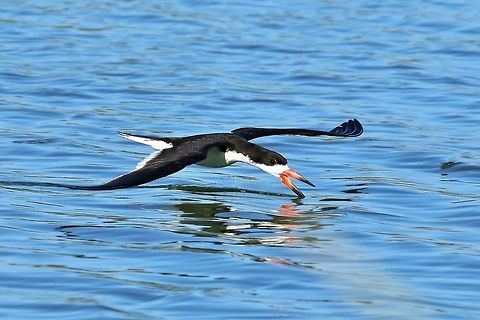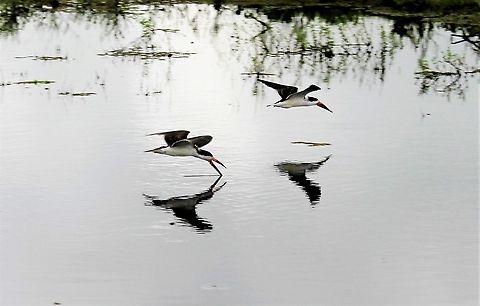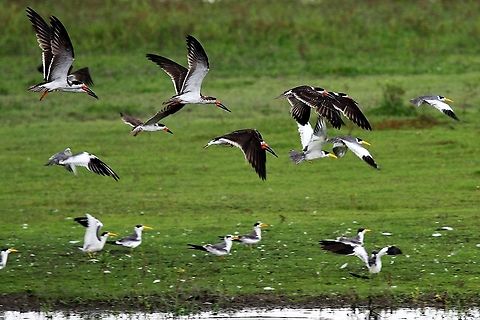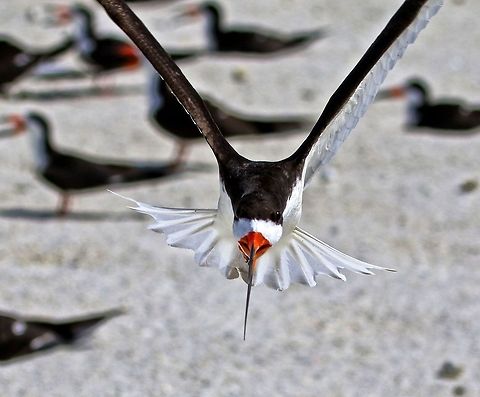
Appearance
The Black Skimmer is the largest of the three skimmer species. It measures 40–50 cm long with a 107–127 cm wingspan. This species ranges from 212 to 447 g, with males averaging about 349 g, as compared to the smaller female’s 254 g. The basal half of the bill is red, the rest mainly black, and the lower mandible is much-elongated. The eye has a dark brown iris and catlike vertical pupil, unique for a bird. The legs are red. The call is a barking "kak-kak-kak".Adults in breeding plumage have a black crown, nape and upper body. The forehead and underparts are white. The upper wings are black with white on the rear edge, and the tail and rump are dark grey with white edges. The underwing colour varies from white to dusky grey depending on region.
Non-breeding adults have paler and browner upperparts, and a white nape collar. Immature birds have brown upperparts with white feather tips and fringes. The underparts and forehead are white, and the underwings as the adult.

Naming
The Black Skimmer has three subspecies:⤷ Migratory "R. n. niger" breeds on the Atlantic coast of North America, and from southern California to Ecuador in the Pacific.
⤷ "R. n. cinerescens" is larger, has dusky underwings, and only a narrow white fringe to its black tail, and breeds in northern and northeastern South America and the Amazon basin.
⤷ "R. n. intercedens" occurs on the rest of the Atlantic coast of South America south to central Argentina.

Reproduction
The Black Skimmer breeds in loose groups on sandbanks and sandy beaches in the Americas, the three to seven heavily dark-blotched buff or bluish eggs being incubated by both the male and female. The chicks leave the nest as soon as they hatch and lie inconspicuously in the nest depression or "scrape" where they are shaded from high temperatures by the parents. They may dig their own depressions in the sand at times. Parents feed the young almost exclusively during the day with almost no feeding occurring at night, due to the entire population of adults sometimes departing the colony to forage. Although the mandibles are of equal length at hatching, they rapidly become unequal during fledging.
Food
Skimmers have a light graceful flight, with steady beats of their long wings. They feed usually in large flocks, flying low over the water surface with the lower mandible skimming the water for small fish, insects, crustaceans and molluscs caught by touch by day or especially at night. They spend much time loafing gregariously on sandbars in the rivers, coasts and lagoons they frequent.References:
Some text fragments are auto parsed from Wikipedia.